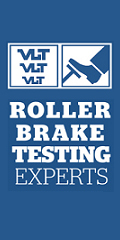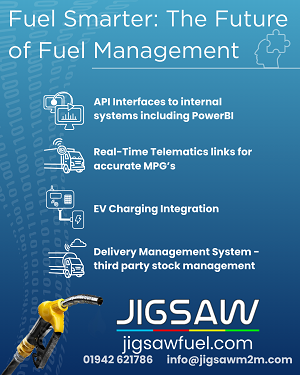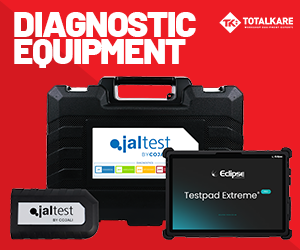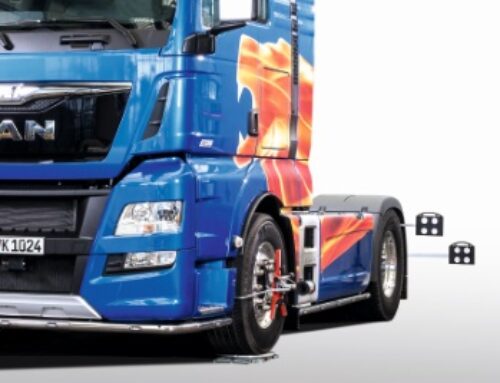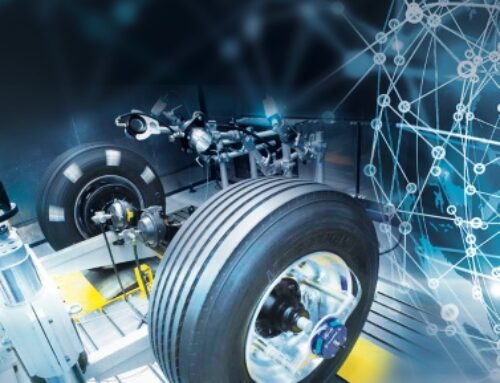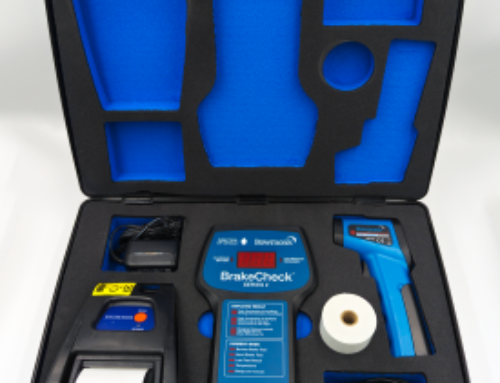Autolift: the role of pit jacks in safe inspections
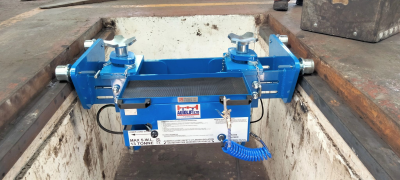 Key to the challenge of any heavy-duty vehicle inspection regime is the need for equipment that not only makes the job possible, but also ensures that technicians and inspectors remain safe, says lifting solutions specialist Autolift.
Key to the challenge of any heavy-duty vehicle inspection regime is the need for equipment that not only makes the job possible, but also ensures that technicians and inspectors remain safe, says lifting solutions specialist Autolift.
“Among the most essential tools in this process are pit jacks, whose design, durability, and safety features have advanced significantly in recent years,” said the company.
Autolift describes pit jacks as the workhorse of the inspection bay – hydraulic lifting units that travel along the length of an inspection pit, allowing precise lifting of heavy axles or entire sections of a vehicle.
“Unlike mobile column lifts, which raise a whole vehicle off the ground, pit jacks are designed for quick, controlled lifting of specific axles,” the firm continued.
“This makes them especially useful for brake testing, wheel removal, suspension work, and underbody inspection.
“Modern pit jacks are engineered to cope with extreme weights, often lifting 20 tonnes or more. They are built with robust frames, heavy-duty hydraulic cylinders, and various safety mechanism. The ability to roll along the pit gives technicians flexibility – lifting wherever the work requires, without the need to reposition the vehicle.”
Given the enormous forces at play, says Autolift, safety is paramount.
“A poorly designed or incorrectly used jack can have catastrophic consequences, both for the technician beneath the vehicle and the wider workshop environment. By reducing risk, they also allow technicians to work more confidently and productively. That’s why Autolift’s pit jacks incorporate a range of built-in safety features.”
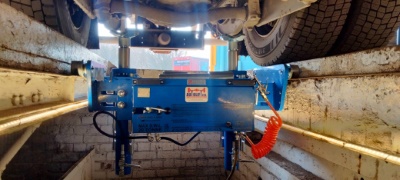 These include overload protection in the form of integrated overload valves, which prevent the jack from lifting beyond its rated capacity, protecting both the equipment and the operator. Fail-safe hydraulics are also employed: an anti-burst valve in each prevents accidental lowering and ensures the vehicle remains secure even if hydraulic pressure is lost.
These include overload protection in the form of integrated overload valves, which prevent the jack from lifting beyond its rated capacity, protecting both the equipment and the operator. Fail-safe hydraulics are also employed: an anti-burst valve in each prevents accidental lowering and ensures the vehicle remains secure even if hydraulic pressure is lost.
“Accessible, easy-to-use controls allow for precise lifting and lowering, reducing operator fatigue and mistakes,” added Autocraft.
“In order to prevent accidental lowering, the Spring-Loaded Safety Lowering Valve must be moved horizontally for the rams to begin lowering.”
Lock-off handles are on the bottom of each ram and allow for independent use of the rams. “When turned on they will prevent the lowering of the rams by use of the controls,” said Autocraft. “If they are turned on and there is a hose failure they will prevent the lowering of the rams but if they are not on then the anti-burst valve will take effect.”
Meanwhile, adjustable lifting beams enable adaptable lifting points to accommodate a wide range of axle widths and vehicle designs, ensuring a secure grip.
Autolift also offers a Security Strut mechanism as an optional extra safety feature.
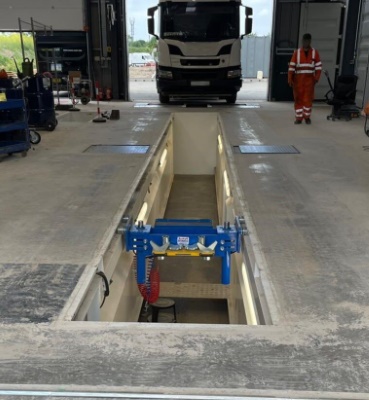 “They equate to ‘screw lock threaded rams’ on other brands of pit jack,” the firm explained.
“They equate to ‘screw lock threaded rams’ on other brands of pit jack,” the firm explained.
“Once the desired lifting height is reached the pins are placed through the lowest hole and this will stop the rams being lowered, either accidently, or if all the aforementioned safety features fail, which is extremely unlikely.”
Cited benefits of Autolift’s Security Strut mechanism compared to the ‘screw lock’ alternative include that it is quicker to insert and remove the pins.
In addition: “Keeping the ram sealed ensures no water (causing rust) or debris can enter the sealed unit. Therefore, the ram doesn’t need to be re-sealed regularly [meaning] less downtime and ongoing maintenance costs. Threaded rams need to be resealed every 1-3 years whereas our rams can last many more years as the entire unit is sealed, and we use the latest in seal technology to increase longevity.
“Threaded rams are more likely to become blocked with muck due to the tough working environment they operate in. This could render the safety mechanism defunct by them not being used by the end user, or will result in further downtime cleaning out the threads.”
The last two decades have seen significant developments in pit jack technology, the firm says.
“Where once they were basic hydraulic units, today they are precision-engineered tools. Manufacturers have invested in stronger materials, smoother operation, and advanced safety mechanisms. Many units are now designed with low-maintenance components, reducing downtime and extending service life.
“Some of the latest models even incorporate modular features, allowing a single jack to handle a wider range of vehicle types – from light commercial vans to the heaviest articulated trucks. For workshops that deal with a diverse fleet, this flexibility is invaluable.”
Of course, even the most advanced equipment is only as safe as the people operating it – and the company emphasises the essential task of training technicians in the correct use of pit jacks.
“This includes understanding weight limits, correct placement under axles, and the importance of engaging safety locks every time. Regular maintenance and inspection of the jacks themselves are also crucial – hydraulic seals, safety catches, and moving parts should be checked routinely to ensure reliability.”





